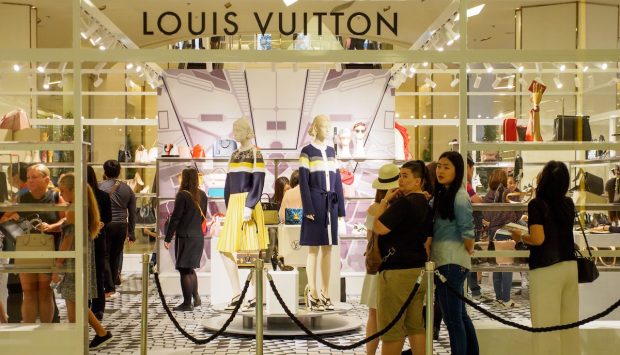Luxury Retail Sector Awaits Surge in Chinese Tourists

The luxury retail sector is expecting more Chinese tourists after three years of pandemic restrictions.
China announced Monday (Dec. 26) that it will lift international travel restrictions in January. This will allow the return of Chinese tourism, which is the world’s largest source of tourist spending, The Wall Street Journal (WSJ) reported Tuesday (Dec. 27).
These tourists also account for a large share of purchases of luxury goods. In the pre-pandemic year of 2018, Chinese consumers purchased about one-third of the world’s luxury goods, according to a Tuesday (Dec. 27) WSJ report, which cited research by Bain & Co.
As PYMNTS reported in April, global fashion, perfume, leather and liquor conglomerate LVMH told investors that its Asian revenues, excluding Japan — its single-largest geographic region which accounts for 37% of global revenue — saw first-quarter growth slow to 8% this year from 86% in 2021.
During the nearly three-year absence of Chinese tourism, several luxury retail locations in Europe have closed. By contrast, following the announcement of the easing of travel restrictions by China, some luxury brands’ stocks rose by as much as 2.5% as investors anticipated a return of these buyers, according to the WSJ report.
While Chinese consumers are expected to account for 17% to 19% of the world’s luxury spending this year, when their shopping has been slowed by pandemic restrictions, they’re expected to make up as much as 40% of the market by 2030, the report said, again citing figures from Bain & Co.
Travel bookings by Chinese consumers more than tripled when the lifting of the restrictions became known, according to Trip.com Group statistics mentioned in the report.
Chinese tourists purchase most of their luxury goods abroad to reap the authenticity factor, shop tax-free using European rebates and save on the overall base prices, which is often less than in China.
To cater to these customers, in the years before the pandemic, European retailers hired Chinese-speaking staff and focused on the products favored by tourists from China.
For all PYMNTS retail coverage, subscribe to the daily Retail Newsletter.